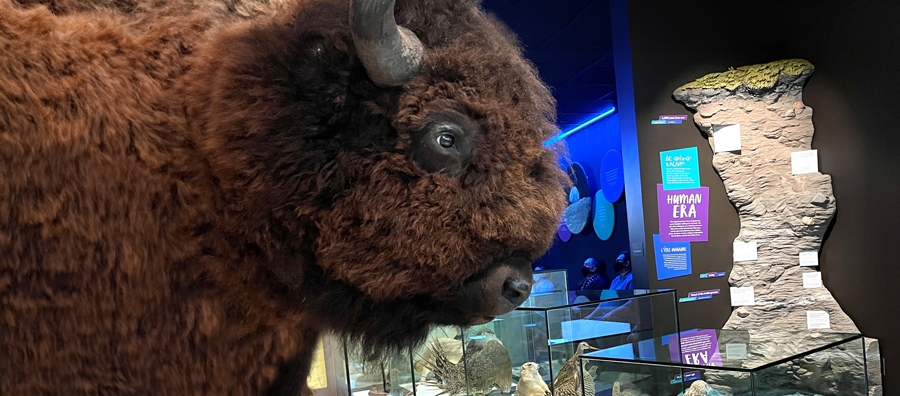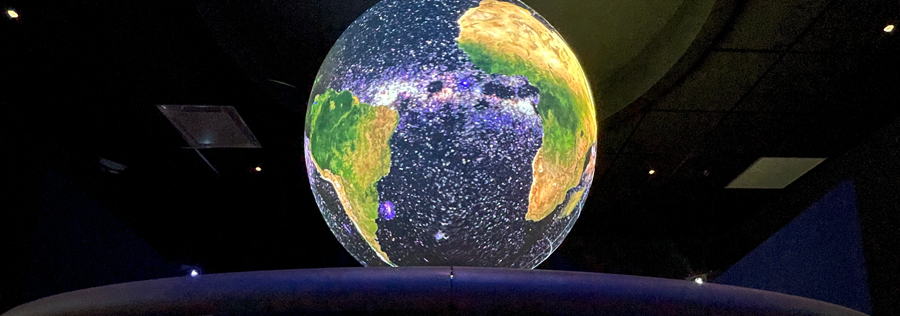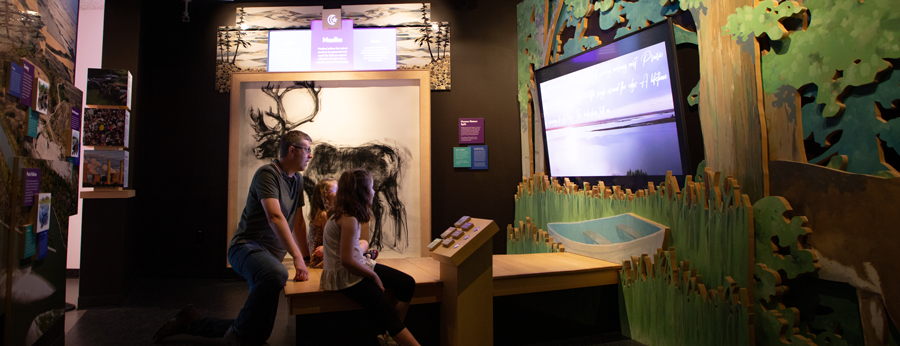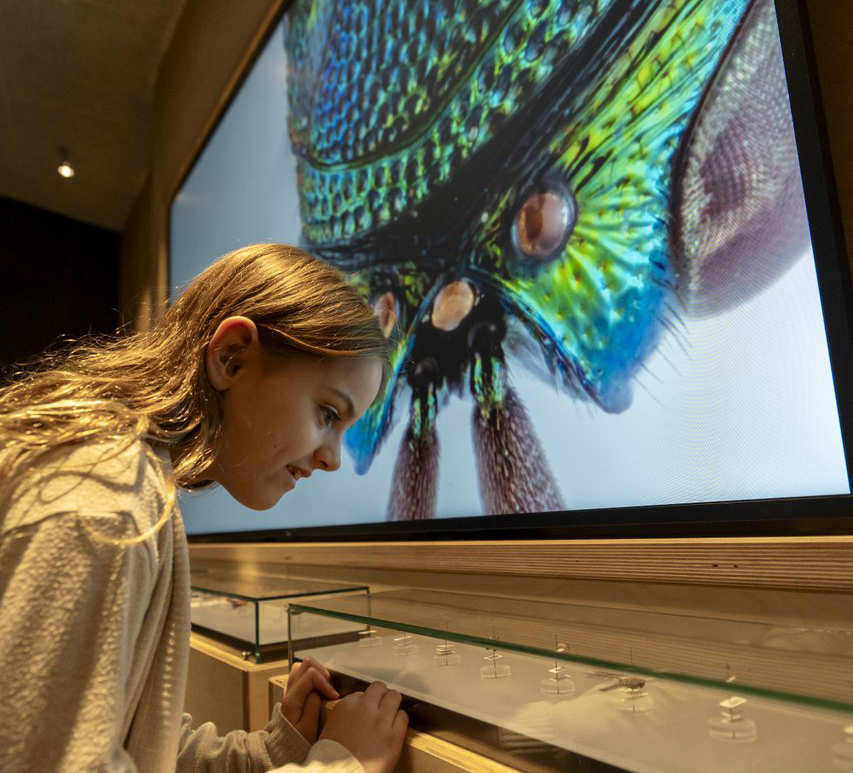See the impacts we are making on the geological record. Learn how you can make a difference.
Human activities are now having global impacts, to the point where the world is moving into a new geological period called the Anthropocene. Home: Life in the Anthropocene looks at what this means, and the benefits nature provides, offering a dramatic, artistic and educational experience for all ages.
Come celebrate and reflect on our only home, our global history, and our shared future.
Be the change you want to see.

What is the Anthropocene?
Home starts with a focus on extinction, showcasing all of the extinct, endangered, or threatened species in Saskatchewan, either as specimens or illustrations. The first area also includes an updated footprint calculator, a display about “wicked” problems, and a fabricated river cutbank that shows how the Anthropocene is likely to show up in the geologic record.

Human Impacts
At the centre of the gallery is a large Science on a Sphere globe where visitors can watch customized 5-min videos that illustrate how Saskatchewan is connected to other parts of the world. These videos explore 6 aspects of sustainability:
- Climate and Water
- Energy and Resources
- Food, Waste and Pollution
- Biodiversity
- Population and Justice
- Health and Wellness.
Visitors can also learn more about these topics by selecting from a catalogue of NASA visualizations, which are regularly updated.

Going Global
As visitors walk through an urban back alley, two digital clocks reflect the global use of renewable energy and the time remaining until humanity is committed to a 1.5°C increase in global temperature. Another display, called Big Ideas, looks at powerful driving forces, including the notion that science can solve all our problems and that markets should never be regulated.

A Natural Solution
This area uses high-definition aerial photography to show how ecosystems have limits, based on a Saskatchewan river valley. Another display features lyric videos for six songs that were created by local songwriters through an RSM program called Songs for Nature. All the songs are also available on Bandcamp and Youtube.


